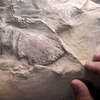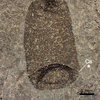The Power of Neolithic Engineering

The entrance to Dolmen of Menga
Post Author - Ellis Nolan
When we think of the origins of science, mathematics, and engineering, names like Ptolemy and Archimedes might come to mind, but what if the principles they would be credited with discovering were used thousands of years before those men were even born? A recent study on one of the earliest human structures on Earth suggests just that.
The subject of this claim is the 6,000-year-old limestone monument known as The Dolmen of Menga. Located in southern Spain, “Menga,” as it is referred to by the authors, belongs to a category of massive prehistoric structures known as “megaliths.” Stonehenge in the United Kingdom and the Carnac Stones in France are other notable examples.
Menga’s assembly includes 32 limestone blocks weighing over 1,140 tons. The heaviest of the bunch weighs in at a whopping 150 tons, making it “one of the largest stones ever moved in Europe’s prehistory.” Scientists say such a feat would have been impossible without an advanced knowledge of physics and geometry.
A support beam inside the structure
In their analysis, the authors of the study concluded that the Dolmen of Menga represents a “unique example of creative genius and early science among Neolithic societies” due to a variety of factors. By examining footage from past archaeological excavations and studies, the authors were able to deduce the order in which the stones were placed to construct the monument, revealing a highly strategic and precise process that resulted in each stone connecting with and thereby supporting the weight of its neighbors. Not only that, but the scientists found that a third of the height of each of the walls is buried beneath the surface into the bedrock.
Perhaps most astonishingly, the 150-ton “ceiling” stone was shaped such that its weight would be held mostly by the sides of the structure, representing possibly the first-ever architectural instance of an arch. Other archaeologists have noted that not everything can be attributed to the knowledge of prehistoric peoples: one has argued that similar shaping of stones in other megaliths has been due to erosion. Much around these awe-inspiring structures still remains a mystery, but one thing seems more and more clear: whoever was wearing the prehistoric hard-hat certainly also had on their thinking cap.
Interested in getting Neolithic Tools? Browse our collection here!
Featured Product
Joe Frazier Boxing Glove
Cool Things!

Is “Paul is Dead” Dead?: Unpacking One Of Pop Culture’s Most Enduring Conspiracy Theories

Scientists Discover Hooves and Skin in Preserved Dinosaur "Mummies!"
A dinosaur discovery just in time for Halloween! In a new analysis of a group of fossils from Wyoming, Scientists have determined this group of fossils are dinosaur “mummies,” with preserved skin and even hooves.

Scientists Record a Bat Catching Birds Mid-Flight!
Bats, birds, screeches, oh my! In a reverse-Hitchcock twist, a new study reveals that a species of European bat catches and eats birds mid-flight.
Specimen Deep Dives

The House that Ruth Built: The Story of the Old Yankee Stadium

The Queen of the Skies: the Story of the Boeing 747

Old Ironsides: The USS Constitution and the Start of the U.S. Navy
Long Form Articles

The Artist Behind the Macintosh: Susan Kare and Apple Computers
While the two Steves, Jobs and Wozniak, are the most well known faces behind Apple computers, equally important to the products and culture of the company were those who crafted the experience of using their computers through design. The most notable of these visual architects was Susan Kare, a designer responsible for “humanizing” Macintosh computers.

Can I Lick It? Yes You Can!
Have you ever been unable to tell if a fossil was really a fossil, but you were too embarrassed to admit it? Have you ever wanted to lick a fossil just because, but you didn’t want to risk judgment from your peers? Well, good news! You can kill two birds with one stone! Licking a fossil can actually help you determine if it’s the real deal or just another rock.

Is It Legal To Own a Meteorite: How to Start Your Outer Space Collection!
Meteorites are some of the rarest geological specimens to be found on Earth. Of course, since these stones are not of our world, purchasing them can sometimes be a confusing process. Is it legal to own a meteorite? In short, yes! Read on for help starting your cosmic collection!



















